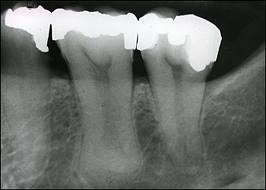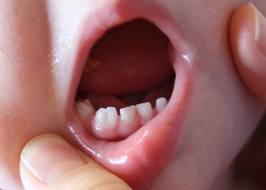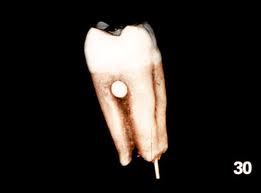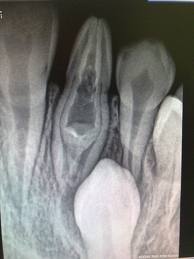Our teeth may have different sizes in different individuals, but they all have a typical shape to serve their different functions. Different teeth can be identified from each other by their shapes. However, sometimes abnormalities or variations occur in the shape or form of the tooth, which may be due to developmental causes, or environmental causes such as trauma or genetic causes. Here are some variations in tooth form that one may find in no particular order of occurence:
1. Dilacerated tooth
A dilacerated tooth is a tooth that has become distorted along the long axis of the tooth. This usually is a result of trauma, eg. During eruption or effects of trauma to primary tooth onto the succeeding permanent tooth bud beneath it. Dilaceration often involves upper incisors, and sometimes is associated with the tooth being non-vital.
2. Taurodontism
A taurodont tooth, also known as “bull-like tooth†is a tooth that has elongated body and pulp chamber, without an increase in the length of the tooth. This is due to failure of invagination from the root tip upwards at the proper level during the development process. Thus only multirooted teeth are involved. Also, there is no constriction at the neck of the tooth. This tooth may be found in patients with Klinefelter and Poly-X syndromes.
3. Double teeth
Double teeth means 2 teeth that are joined together, and may involve only the enamel, or may extend up to the dentine and even pulp. It may be due to fusion of 2 teeth during development (“fusionâ€) or may be due to a single tooth bud that partially develops into 2 teeth without a complete division (“geminationâ€). The incisors are most commonly affected.
To differentiate whether a tooth is formed by fusion or gemination, simply count the number of tooth in that arch or guadrant. Eg, in a permanent dentition, in every quadrant there are 2 incisors, 1 canine, 2 premolars and 3 molars. If a double teeth appears in the place of a 1st premolar, and it is situated between a canine and a second premolar, then is it formed through gemination. However, if that double teeth is present between a canine and a 1st molar, then the double teeth is due to fusion of the 1st and 2nd premolars.
4. Concresence
Concresence is 2 teeth that are joined together by the cementum (the outermost layer of a tooth root). This may be due to trauma, or close approximation during development, or excess production of cementum (hypercementosis) associated with chronic inflammation.
5. Talon cusp
Talon cusp is an extra cusp that develops on the inner surface of upper or lower incisors. Its presence can affect occlusion since in normal occlusion, lower incisors occlude on the inner surface of the upper incisors. It contains all enamel, dentine and pulp such that its removal would require that root canal treatment be performed.
6. Supernumerary roots
Normally, incisors, canines and premolars have one root, except the upper 1st premolar which has 2 roots usually. Upper molars have 3 roots while lower molars have 2 roots. All 3rdmolars have variable number of roots (can be one, 2 or 3 roots), as sometimes the roots tend to fuse together. If a tooth presents with more than the number of roots mentioned, it is said to have supernumerary roots, for example, a canine with 2 roots.
7. Enamel pearl
An enamel pearl is a globule of enamel found on a surface of tooth, particularly the furcation area of root (where 2 or more roots meet), and hence is usually found in teeth with more than one root.
8. Invaginated tooth/ Dens in dente
Invaginated tooth, also known as “tooth within a tooth” (dens in dente), is when the tooth surface folds inwards during development, resulting in what appears to be a smaller tooth (consisting of enamel, dentine and pulp) being present in the tooth itself. It is commonly seen in upper lateral incisors, and can sometimes occur bilaterally.
9. Evaginated tooth-Leong’s premolar
Evaginated tooth is opposite of invaginated tooth, causing what appears to be an extra cusp on the top surface of the tooth. It is often found on premolars (called “Leong’s premolar“, and is often found in people of oriental decent). It may consist of all enamel, dentine and pulp layers such that in the event that its removal is required (eg. it impedes on the occlusion), root canal treatment (RCT) may be necessary.




